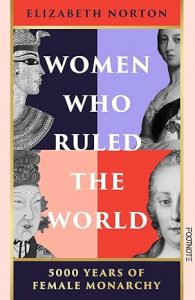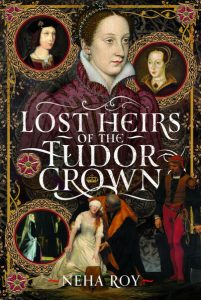Elizabeth Fremantle is the author of ‘Sisters of Treason’ and ‘Queen’s Gambit.’
‘Sisters of Treason’ is available to buy now in the UK and will be published in the US in July.
To buy her new novel:
Elizabeth Fremantle – Sisters of Treason
Follow Elizabeth Fremantle on Social Media:
Elizabeth’s website: www.elizabethfremantle.com
Twitter: @lizfremantle
Facebook: Elizabeth Fremantle
Many thanks to Elizabeth for answering my questions.
Why did you choose the Grey sisters as the focus of the second novel in your Tudor trilogy?
There are many reasons, not least because the three Grey sisters’ lives are so very poignant and surprisingly little known, though they were lived at the very heart of the struggle for the Tudor succession. For me it was a natural progression from Katherine Parr’s story, which I focused on in Queen’s Gambit. Both Jane Grey and Elizabeth Tudor had been part of the Dowager Queen’s household and shifting emphasis onto the Grey family for my second novel, enabled me to explore, from an oblique angle, the period of history when the English were forced to accept not one but two Queens regnant – a fascinating time that required unprecedented social adjustment. The trilogy as a whole charts, through the lens of different female protagonists, the rise and eventual demise of Elizabeth. In Sisters of Treason it is clear that Elizabeth’s will was a pivotal factor in the lives of Katherine and Mary Grey.
Which was your favourite sister to write about?
Though Katherine’s story is inherently more romantic and tragic, I’d have to say Mary. Initially my idea had been to write exclusively from Mary’s perspective as I had a strong desire to give voice to a woman living with disabilities. She was burdened with severe scoliosis and was very small of stature at a time when physical blemishes were thought to be the devil’s work, yet she was manifestly not divested of spirit by this fact. This is bourn out by the defiance she demonstrated. For me she is the heart of the novel and a true heroine.
What gave you the idea to have Frances, Duchess of Suffolk and Levina Teerlinc witness Jane’s execution?
This was a key scene that made sense of all the later events and it was important for understanding the bond of friendship between the two women. Having Levina’s close third person perspective also to gives the reader a visceral sense of the tragedy and heightens the impact, which might not have been the case had I employed a more distant, omniscient narrator. Her painterly eye allowed me to make the scene very visual, and the symbol of the gush of blood became a kind of refrain through the novel as if Jane was haunting the narrative.
In the novel you write from the point of view of Catherine and Mary. Which sister was it easiest to write as and why?
Katherine’s voice seemed to arrive fully formed and Mary’s was much more challenging. Mary is such a complex character and was only nine at the start of the novel and transforms greatly through the narrative, whereas Katherine’s personality remains fairly stable.
Your portrayal and descriptions of Queen Mary are not very sympathetic. Is this because they are from the view point of Mary Grey?
Yes, absolutely! As each girl tells her own story from a first person perspective I felt it was essential to maintain their intimate opinions of those around them. Each has her own slightly differing vision of Mary Tudor. She is certainly an antagonist for all three protagonists and so comes off rather badly in the telling, I’m afraid. My personal view is more nuanced and a little of that seeps into the narrative. Mary was driven by her faith and the over-arching belief that she had God on her side. I suppose she was a latter-day fundamentalist.
Other than as a witness to events, why did you make Levina Teerlinc a major character?
Levina offered the opportunity to see life outside the court. The girls’ lives were so cloistered and so much of the context of the story needed to be established outside the confines of the royal palaces. I was intrigued by the idea of a woman working as a painter, as it was so unusual for the period, and Levina allowed me to visit the theme of ‘women in charge’, that I explored through the two Queens, from a differing perspective. It was also important to have a more mature overview of events as a counterpoint to the girls’ limited and naïve viewpoints; this is why her account is written in the third person, allowing a broader vision.
Mary Grey comments that, ‘They are not so different, those sister queens, their spirits both woven through with ruthlessness.’ Which court was the most dangerous for the Grey sisters? Mary or Elizabeth’s?
In the context of the younger Grey girls I believe it was Elizabeth who proved the greater adversary, but it is impossible to forget what happened to Jane at the hands of Mary Tudor.
Can you tell us any details about the final novel in the trilogy?
The third novel is focused around the life of Penelope Devereux, her love affair with Sir Phillip Sidney and her involvement in her brother, the Earl of Essex’s political coup. This gives the gist of the story:
The daughter of the Queen’s nemesis, Penelope Devereux, arrives at court blithely unaware of its pitfalls and finds herself in love with one man, yet married off to another. Bestowed with beauty and charm she and her brother, The Earl of Essex, are drawn quickly into the aging Queen’s favour. But Penelope is saddled with a husband who loathes her and chooses to strike out, risking her reputation to seek satisfaction elsewhere. Life at the heart of the court though, is not only characterised by the highs and lows of romance, there are formidable factions at work who would like to see the Devereux family brought down. It seems The Earl of Essex can do no wrong in the eyes of the Queen but as his influence grows so his enemies gather and it is Penelope who must draw on all her political savvy to prevent the unthinkable from happening.
Told from the perspective of Penelope and her brother’s greatest enemy the politician Cecil, this story, wrought with love, hatred and envy, unfolds over two decades in which we see the last gasps of Elizabeth’s reign, and the deadly scramble for power in a dying dynasty.





































